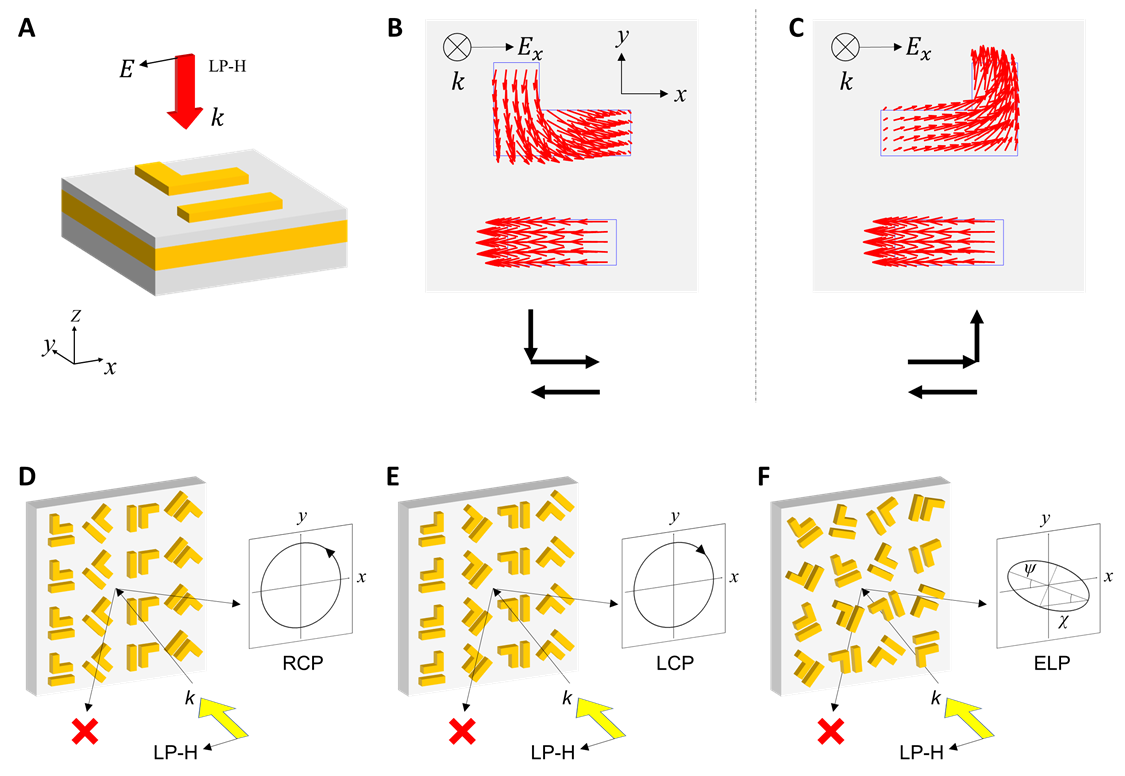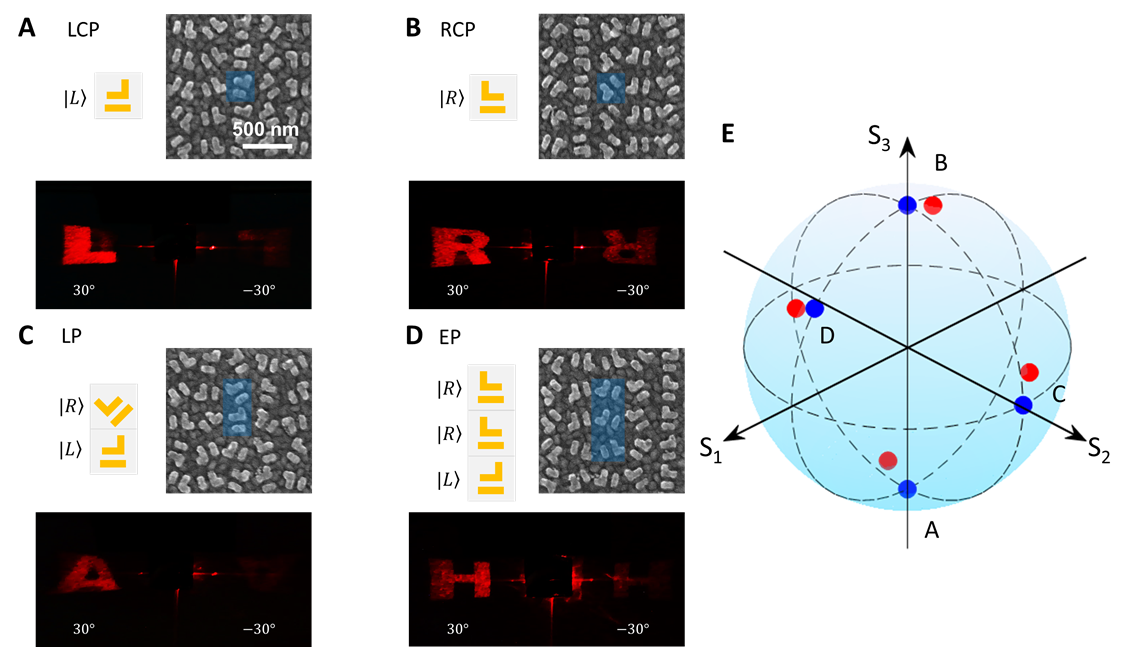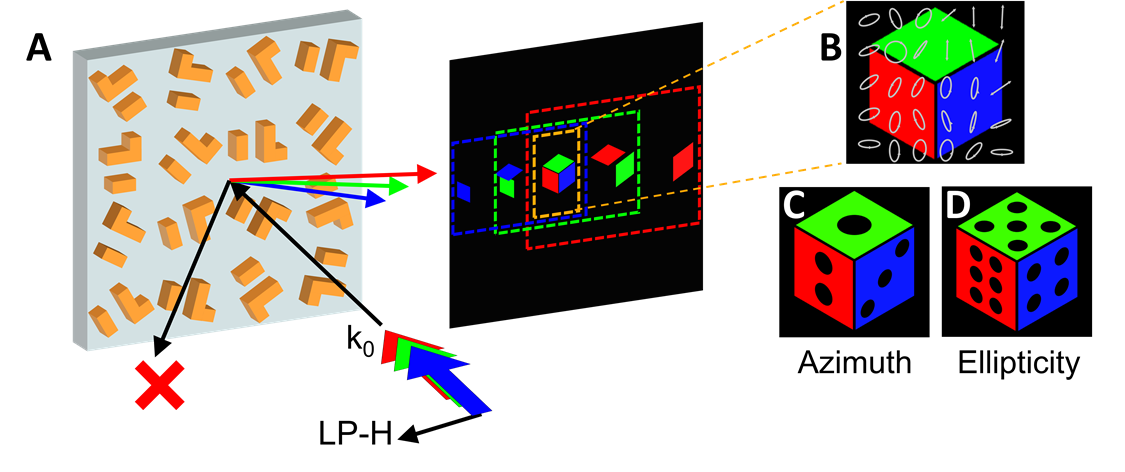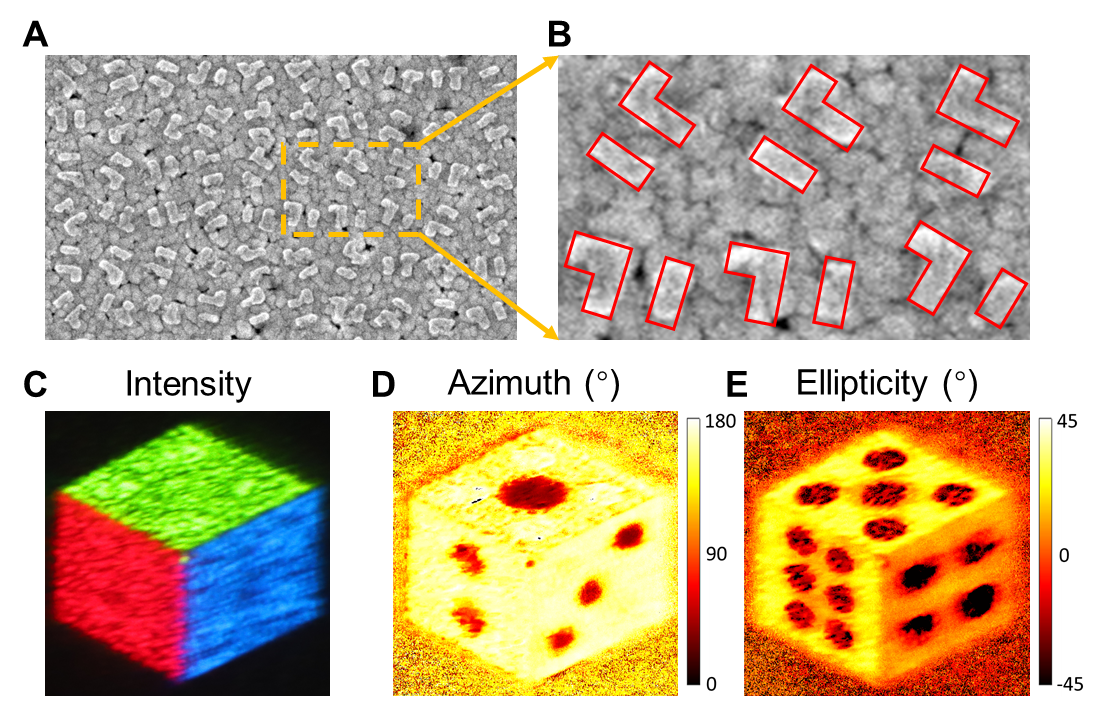Exceptional points (EP) are a special class of singularity points in non-Hermitian systems, where the eigenvalues and eigenstates coalesce in the parameter space, leading to dimensionality reduction of the relevant Hilbert space. In such systems, due to the degeneracy of eigenstates, EP will only operate on a certain physical channel (e.g., in one circular polarization but not in the other, in the case we operate in the light-polarization space). This intrinsic characteristic can be used to achieve interesting asymmetric control, such as asymmetric transmission of circularly polarized light and unidirectional non-reflection phenomena.
However, the chirality of EP causes the isolated EP system to only respond to a single eigenstate, which greatly limits its application in the field of wavefront control. Therefore, enabling the manipulation of constructing singular effects in arbitrary polarization states can have practical applications. In addition, the design of full-color vectorial metasurfaces operating under multi-wavelength conditions is still a major challenge so far. Combining wavelength information with full-polarization vectorial fields has applications in full-color display and secure data storage.

Figure 1. Schematic of vectorial wavefront modulation achieved by exceptional point pairs
Recently, SONG Qinghua, associate professor at Tsinghua SIGS, Patrice GENEVET, professor at the Université Cote d’Azur, CNRS, CRHEA, and WU Pin Chieh, associate professor at the National Cheng Kung University, have proposed a new method to extend the specific asymmetric response of the EP photonic systems and constructed a new strategy of asymmetric vectorial wavefront modulation, realizing full-polarization singular effects.
The researchers found that by applying the mirror-symmetry strategy to the nanostructures, the inversion of the handedness of the EP eigenmode can be realized, thereby achieving the construction of a pair of orthogonal EP eigenstates. The researchers superimposed these two optical signals originating from the orthogonally polarized EP degenerate eigenmodes, achieving asymmetric reflection of the two circularly polarized beams and extending the response of the metasurface to all polarization states beyond the CP state. By rotating the meta-structure at the EP, the Pancharatnam-Berry (PB) phase can be individually encoded on a certain circular-polarization (CP) conversion channel. This non-Hermitian reflective PB metasurface designed by EP combination exhibits arbitrary and unidirectional vector wavefront shaping capabilities, breaking the inherent limitations of topological metasurfaces.
This research work improves the possibility of widespread application of topological wavefront shaping and opens the way for optical communication, data encryption, and high-density optical data storage of topological metasurfaces. In addition, the strategy of coupling a pair of EPs to achieve the extension of asymmetric response is also of great reference significance for a wider range of EP systems, beyond photonics.

Figure 2. Design principle of topological vectorial metasurfaces with EP pair

Figure 3. Simulation results of the EP pair with the mirror-symmetric structures

Figure 4. Asymmetric meta-hologram with different polarization designs
These research results were published in Nature Communications under the title of "Creating pairs of exceptional points for arbitrary polarization control: asymmetric vectorial wavefront modulation." The corresponding authors of this article are SONG Qinghua, associate professor at Tsinghua SIGS, Patrice GENEVET, professor at the Université Cote d’Azur, CNRS, CRHEA, and WU Pin Chieh, associate professor at the National Cheng Kung University. The first authors are YANG Zijin, a doctoral student from Tsinghua SIGS, and HUANG Po-Sheng from National Cheng Kung University. Research collaborators include QIN Haoye, Associate Professor Tang Man-Chung, Assistant Professor Han Sanyang, and Professor LI Bo from Tsinghua SIGS, LIN Yu-Tsung from National Cheng Kung University, Dr. Jesús ZÚÑIGA-PÉREZ from the Université Cote d’Azur, CNRS, CRHEA, Professor SHI Yuzhi, Professor WANG Zhanshan, and Professor CHENG Xinbin from Tongji University, and Professor Boubacar KANTÉ from the University of California, Berkeley. This work was supported by the National Natural Science Foundation of China and the Science, Technology and Innovation Commission of Shenzhen Municipality.
Based on the above research ideas, SONG Qinghua's team further proposed a unique "phase only" full-color vectorial holography strategy and developed an advanced image compensation algorithm based on discrete Fourier transform, which can correct the size and position of multi-color images under multi wavelength conditions. By combining this compensation algorithm with EP pairs, the conversion of specific CP channels is suppressed in a wide wavelength range, achieving asymmetric wavefront operation under broadband conditions and confirming the multi-channel multiplexing ability of the EP pairs. The full-color vectorial encryption scheme designed by the team can independently encode wavelength and polarization information into the intensity distribution. The coupling of color and polarization properties significantly increases the metasurface information capacity, highlighting its enormous potential in beam shaping, optical imaging and display, data storage, and information processing applications.

Figure 5. Schematic diagram of asymmetric full-color vectorial holography based on EP pairs

Figure 6. Measurement results of the asymmetric full-color vectorial hologram
These research results were published in Nano Letters under the title of "Asymmetric Full-Color Vectorial Meta-holograms Empowered by Pairs of Exceptional Points." The corresponding authors of this article are Song Qinghua, associate professor at Tsinghua SIGS, WU Pin Chieh, associate professor at National Cheng Kung University, and HUANG Wei, associate researcher at the Suzhou institute of NanoTech and Nano-Bionics (SINANO), Chinese Academy of Sciences. The first authors are YANG Zijin, a doctoral student from Tsinghua SIGS, and HUANG Po-Sheng from National Cheng Kung University. Research collaborators include QIN Haoye,doctoral student CHEN Jiaxin, Assistant Professor HAN Sanyang and Professor LI Bo from Tsinghua SIGS, LIN Yu-Tsung from National Cheng Kung University, Professor DENG Zilan from Jinan University, and Dr. Jesús ZÚÑIGA-PÉREZ and Professor Patrice GENEVET from the Université Cote d’Azur, CNRS, CRHEA. This work was supported by the National Natural Science Foundation of China and the Science, Technology and Innovation Commission of Shenzhen Municipality.
Links to full articles:
https://www.nature.com/articles/s41467-023-44428-z
https://pubs.acs.org/doi/full/10.1021/acs.nanolett.3c03611
Written/Figures by Zijin Yang
Edited by Alena Shish & Yuan Yang


